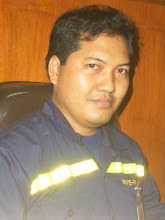 In 2006 AngloGold Ashanti commenced a project to extend its South African TauTona gold mine to 3.9km. This was completed in 2008 making it the world’s deepest mine, surpassing the 3,585m deep East Rand Mine by a good distance. The name TauTona means "great lion" in the Setswana language.
In 2006 AngloGold Ashanti commenced a project to extend its South African TauTona gold mine to 3.9km. This was completed in 2008 making it the world’s deepest mine, surpassing the 3,585m deep East Rand Mine by a good distance. The name TauTona means "great lion" in the Setswana language.The TauTona mine exists within the West Witts area not so far from Johannesburg in South Africa, near the town of Carletonville. TauTona neighbours the Mponeng and Savukamines, and TauTona and Savuka share processing facilities. All three are owned by AngloGold Ashanti.
Production at TauTona fell to 409,000 ounces in 2007, down from 474,000 ounces in 2006, due to increased seismic activity.
This required a review of the practice of mining of shaft pillars and high-grade remnants, and delays to the build-up in volume caused by opening up of the sequential grid. Capital expenditure in Siguiri was R2.5bn ($US71m) in 2007, with 56% committed to the development of ore reserve.
TauTona accounted for 7% of AngloGold Ashanti’s total 2007 gold production.
The mine was originally built by the Anglo American Corporationwith its 2km deep main shaft being sunk in 1957, with operations starting in 1962.
Since its construction two secondary shafts have been added bringing the mine to its current depth. The mine today has some 800km of tunnels and employs some 5600 miners. It is an extremely dangerous environment, with five workers losing their lives in 2007.
The mine is so deep that temperatures in the mine can rise to dangerous levels. Air conditioning equipment is used to cool the mine from 55°C down to a more tolerable 28°C. The rock face temperature currently reaches 60°C.
The journey to the rock face can take one hour from surface level. The lift cage that transports the workers from the surface to the bottom travels at 16 meters a second. The mine has also been featured on the MegaStructures programme produced by National Geographic.
Geology and reserves
 The TauTona mine exists within the West Witts area slightly South West of Johannesburg in the North West of South Africa.
The TauTona mine exists within the West Witts area slightly South West of Johannesburg in the North West of South Africa.Two reef horizons are exploited at the West Wits operations: the Ventersdorp Contact Reef (VCR), located at the top of the Central Rand Group, and the Carbon Leader Reef (CLR) near the base. Owing to nonconformity in the VCR, the separation between the two reefs increases from east to west, from 400m to 900m. TauTona and Savuka exploit both reefs while Mponeng only mines the VCR. The structure is relatively simple with rare instances of faults greater than 70m.
The CLR consists of one or more conglomerate units and varies from several centimetres to more than 3m in thickness. Regionally, the VCR dips at approximately 21°, but may vary between 5° and 50°, accompanied by changes in thickness of the conglomerate units. Where the conglomerate has the attitude of the regional dip, it tends to be thick, well-developed and accompanied by higher gold accumulations.
Where the attitude departs significantly from the regional dip, the reef is thin, varying from several centimetres to more than 3m in thickness.
Total resources 2,615,000 ounces Measured resources 510,000 ounces Indicated resources 8,106,000 ounces
Mining and processing
Mining operations are conducted at depths ranging from 1.8km down to 3.9km following the recent expansion.
The mine consists of a main shaft system supported by secondary and tertiary shafts. The main mining method is longwall. TauTona shares a processing plant with Savuka. The plant uses conventional milling to crush the ore and a CIP (carbon in plant) to further treat the ore. Once the carbon has been added to the ore, it is transported to the plant at Mponeng for electro-winning, smelting and the final recovery of the gold.
Production
Gold production declined by 14% to 12,714kg (409,000oz) (2006: 14,736kg (474,000oz)), owing to a higher-than-expected fall in the volumes of ore mined. This was due to increased seismic activity in the vicinity of the CLR shaft pillar which is being mined, and at several highgrade production panels, where production was halted for limited periods during the course of the year. Both face length and face advance were negatively affected by seismicity during the year. The increased geological risk from this seismic activity necessitated re-planning regarding mine layout and mining methods.





No comments:
Post a Comment